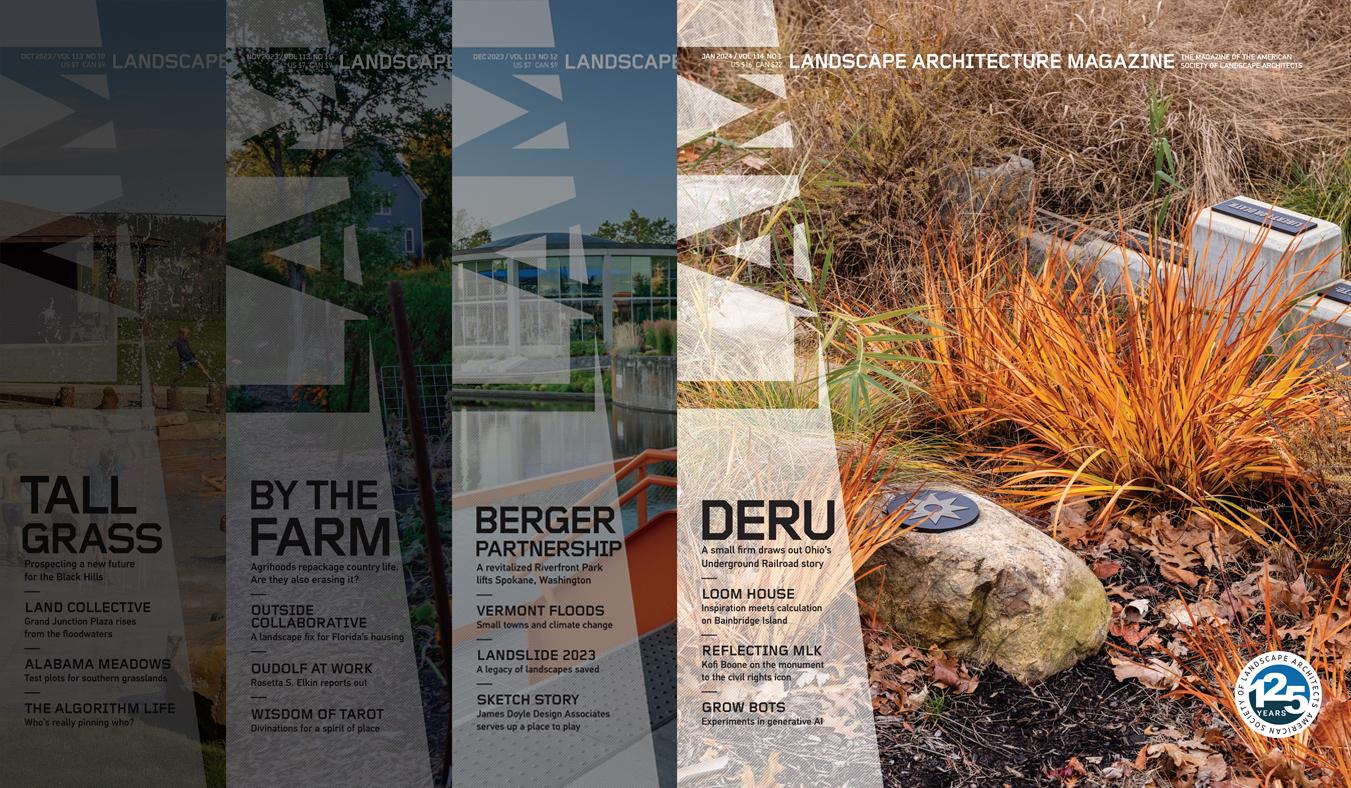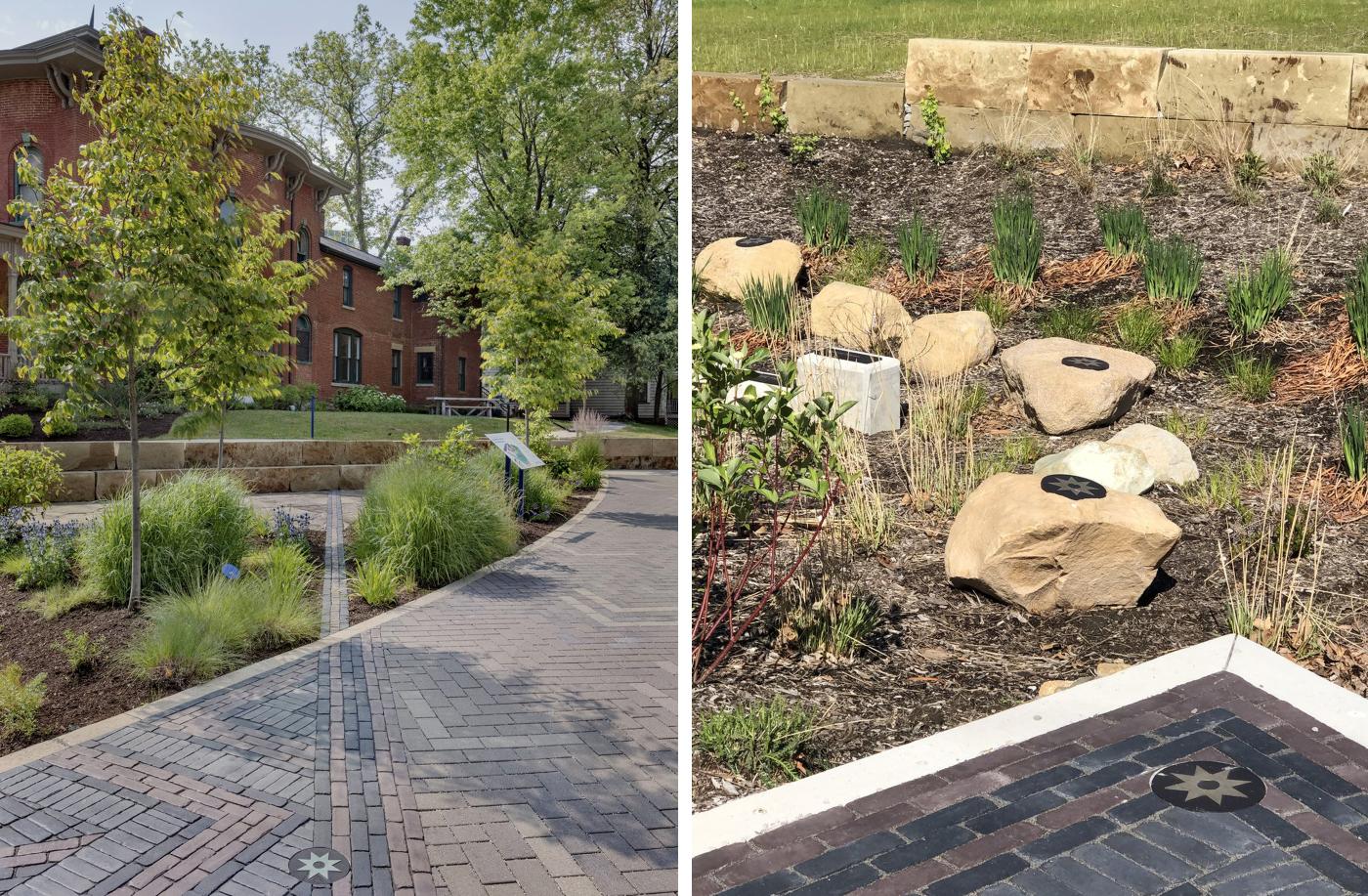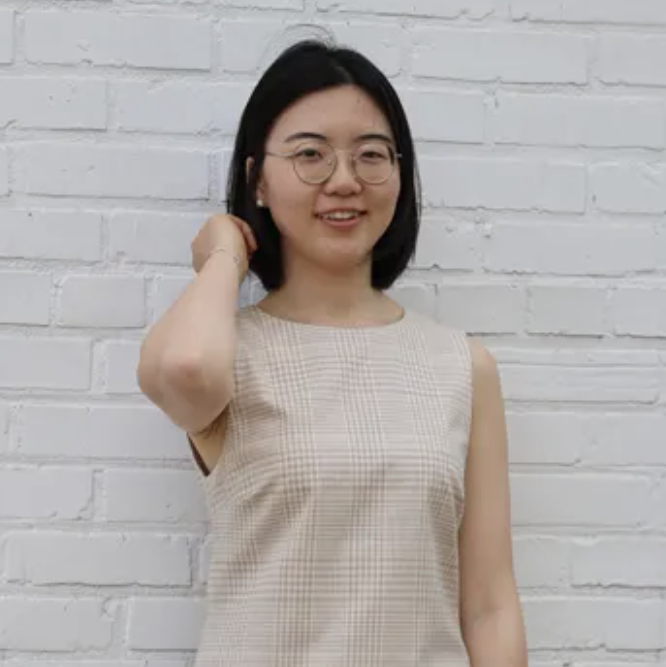
Alum in Action: Jayme Schwartzberg highlights landscape architecture’s storytelling role in the Cozad-Bates House Interpretive Walkway

Jayme Schwartzberg (MA English ’02; MLA ’06)
Founding Principal, DERU landscape architecture
Landscape Architecture Magazine recently featured how DERU landscape architecture draws out Ohio’s Underground Railroad story in their January 2024 issue. Principal Jayme Schwartzberg (MA English ’02; MLA ’06), PLA, ASLA, has created purposeful and narrative driven public spaces that encourage engagement and exploration since founding DERU in 2014.

This approach to storytelling through landscape architecture is highlighted in the Cozad-Bates Interpretive Walkway, a public plaza and path that connects commuters, visitors, and neighboring residents to the Cozad-Bates House and its history.
Located in University Circle, Cleveland, the Cozad-Bates House is the last remaining pre-Civil War era residence in the area — and is reputed, although not confirmed, to have been operated as stop along the Underground Railroad. Now an interpretive center, the building highlights this area’s history and role in anti-slavery activism through exhibits and installations.
We asked Schwartzberg to tell us more about this project’s storytelling approach.
You’ve described “the story of the Freedom Seekers is embedded in the construction of the landscape design” for the Cozad-Bates Interpretive Walkway. Can you elaborate?
Every design choice we made [for the Cozad-Bates Interpretive Walkway] we asked ourselves, “How can this better illustrate some of the many challenges and opportunities of the journey from slavery to freedom?”
We thought a lot about both the optimism and the fear that would surround such a journey and we tried to represent the full spectrum of experiences as much as we could within a small space.
Plants, paving, stormwater, walls, and
seating all tell a little part of the story.

Can you share more on your approach to landscape architecture’s relationship to placemaking?
For the Cozad-Bates House in particular, our task was to tell a story that is often told in facts and figures but can come across as quite dry.
We felt our task was to help people begin
to empathize with the freedom seekers.
Our hope was to psychologically and symbolically prepare people to receive the factual information. From a placemaking standpoint, that meant that everything is not always up-front and spelled out.
The wayfinding is very clear for the main walkways, but the placemaking is filled with clues to make the curious person explore a little farther. You are supposed to be a little puzzled, which is certainly not the normal approach to placemaking. We felt this was important because the act of figuring out the clues gives people a stronger reaction to the information than when they are told it outright.
[Learn more about the landscape design elements.]
What has stayed with you from your A-School education that you draw upon in your professional career?
One of the most lasting impacts, and some
of my favorite experiences at the A-School
were the interdisciplinary opportunities.
Understanding how the different professions prioritize different things, and the jargon we each use has served me well over the years. I have been reminded many times that this experience isn’t common. I think it makes for better, and more creative designers when our little worlds get bigger.


